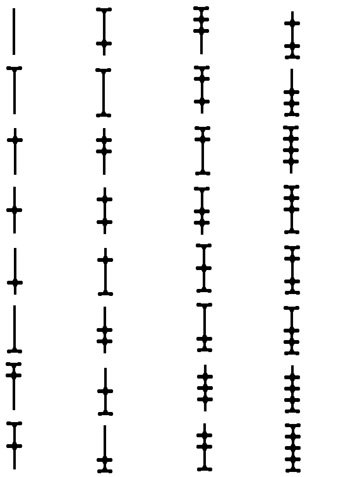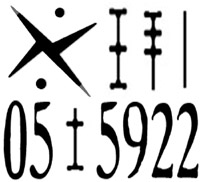 1/
9 / 17 / 25
1/
9 / 17 / 25
Slavery in the Wildmarches
Slavery is an ancient tradition in the Wildmarches, and there are no Feral races that, as a group, refuse its practice. This document seeks to outline the various administrations of the process.
Who Becomes a Slave?
There are two broad types of slaves in the Wildmarches: Bonded and Chattel. Bonded slaves are temporary slaves, usually taken in the process of wars. Bonded slaves are almost entirely Ferals. These slaves usually serve out a duration of slavery equal to life only, and their offspring are considered free once they reach the age of maturity (around 10 for most Ferals). If a Bonded slave is allowed free time to pursue profitable ventures, he or she may be able to buy freedom from this bondage. In general, Bonded slaves are treated with a great deal of respect and rarely forced to do truly strenuous tasks, unless the slave's race is hated by the master.
Chattel are different, in that they are slaves through bloodline. Arising almost entirely from the races of men, most Chattel are considered to be cursed or a lesser race and deserving of no better than slavery. Chattel are born slaves of their parents' owners, and can, at most, hope to be traded to a different household. Chattel can only buy their freedom if they belong to an exceptionally kind master. Even if freedom is bought it is only official with the sanction and protection of the original slave owner. Thus, freed Chattel who leave their former masters' cities or who outlive their former masters often find themselves taken once more as slaves. Most Ferals think of their Chattel as little more than animal labor, like a mule or dog, and treat them accordingly. Whether this involves torment or simply apathy depends on the Feral in question.
Maintaining the Slave Population
At birth or capture, each slave receives a branded glyph on their left shoulder indicating the beginning of slavery and the date when this occurred, as well as series of glyphs indicating personal identification for record purposes. This pattern is soon coupled with a brand of the slave-owner's house glyph. Whenever the slave is traded, the glyph of the new owner is placed beneath that of any former owners. Owners keep careful receipts of traded slaves and their identifications, to prove that they have not stolen slaves and added their brand. Should the slave be freed, another highly recognizable glyph is added at the bottom of the column, but the former slave is well-advised to keep freedom papers on hand to protect against accusations of forgery. Should a slave be re-bonded, a new bondage glyph is added at the column's bottom, and the process begins anew. In general, a slave with a long column is regarded as a troublemaker, though owners may add a brand accent indicating favored status. This addition is usually made when a slave outlives a master and is passed on, or because the slave had useful skills that fetched a high purchase price. While brands can be duplicated, the punishment for doing so is harsh. Each major Feral city has an office of slavery that is the sole legal place to enact branding and to transfer slaves.
Most slaves are allowed a certain degree of freedom. House slaves live, by necessity, near their masters, but other slaves are not so tied. In general, a city's slaves live in specially designated ghettos where they can build a house and raise a family, so long as new births are turned over to the master for branding. Through their youths, slave children are taught various crafts and started on the job they will take later. By late puberty most branded children already know what their lot in life will be. If a slave owner finds that he or she has a number of slave children that are not useful they will often be gathered up sometime around puberty and sent to a big city for a slave auction, rarely to see their parents again.
It is every free citizen's duty to question slaves found outside of a city or township as to their business. Some will have papers indicating that they are messengers or on other official business. Most will be runaways. Should an escaped slave prove to be too canny to be caught by normal citizens, there are tracking groups employed for reasonable rates via the slavery offices. A'rakan, L'kazram, and S'milalf prove especially adept at these jobs. Recently slave security has been tightened around the West coast, as that seems to be where many slaves have fled of late.
Slave Jobs
Slaves fulfil many roles in Wildmarches society. The vast majority of farming, mining, building, and household maintenance is performed by slaves. Some slaves prove to be above average, however. Strong slaves are sometimes used as expendable troops in war, or household eunuch guards. Agile and healthy slaves are often used as messengers and runners, or possibly court jesters. Smart slaves are taught crafts that do not involve incredibly dangerous or valuable products, while perceptive slaves are taught professions and how to instruct less gifted slaves in their performance. Charismatic slaves are taught to provide music, song, or other entertainment for their masters. Least appealingly, attractive slaves sometimes find themselves installed in harems for those Ferals who find themselves with an appetite, sexual or otherwise, for man-flesh. A slave's lot in life is to hope for a kind master and to mourn quietly if the master gained is not so kind.
Slave Glyph Patterns
 1/
9 / 17 / 25
1/
9 / 17 / 25
2 / 10 / 18 / 26
3 / 11/ 19 / 27
4 / 12 / 20 / 28
5 / 13 / 21 / 29
6 / 14 / 22 / 30
7 / 15 / 23 / 31
8 / 16 / 24 / 32
 Slavery
Glyph
Slavery
Glyph
 Slave
21-17-01 from Fifth Month, 13th day, year 5922
Slave
21-17-01 from Fifth Month, 13th day, year 5922